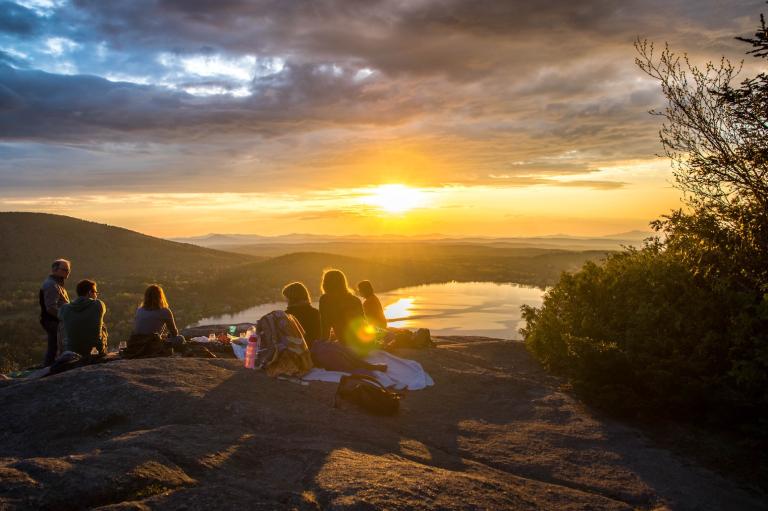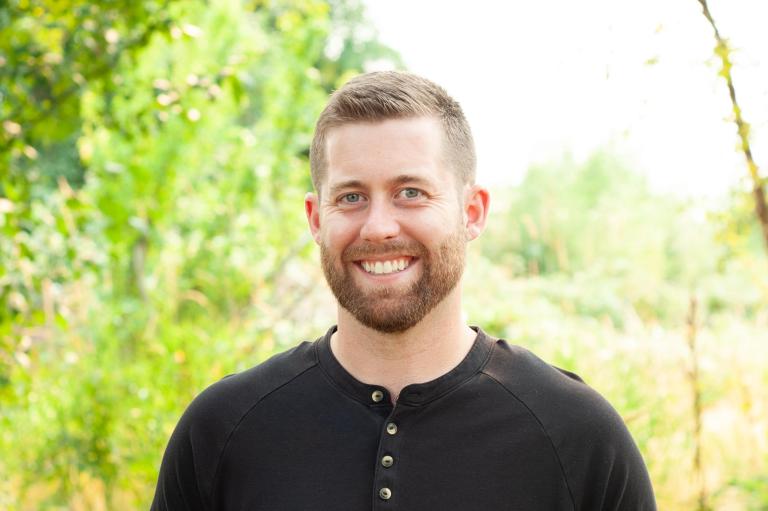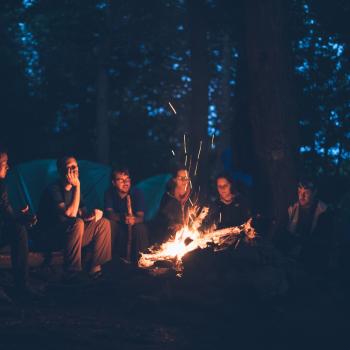
In 2013, I launched a contemplative community in the heart of Seattle’s University District.
This wasn’t a veiled church plant and it wasn’t a specific church’s Thursday night service.
It was a group of folks coming together because they felt done – or done-ish – with the typical Sunday morning experience. They were in search of practical, accessible tools with which to engage their inner lives in a new setting with like-hearted people around them.
They were searching for a communal expression of deep spirituality.
I’ve written a longer explainer on my own approach to contemplative spirituality, but here are three tips and learnings from my three years with the Patmos Community.
1. Co-Create the Container
A container sets the tone, establishes a rhythm for what to expect, and holds the experience for folks. A healthy container will invite bravery and vulnerability, while reducing fear, shame, and guilt.
No matter the format of your gathering, it’s important to be extremely intentional with your physical and ritual space. And because this isn’t about hierarchy, don’t be afraid to co-create the space – when people show up, have them grab their own chairs or seats. Invite them to make the space what they need.
Here are some more ideas:
- Physical Space: If possible, try meeting in the homes of people in the group or in public spaces like coffeeshops. If your group is affiliated with a faith community, try switching it up and refraining from meeting in your faith community’s building.
- Ritual Space: Instead of a typical “sitting in on direction” space, gather together in a circle so that everyone can see everyone. You might sit on couches or chairs or the floor. If it feels right, you can create a small table of intention in the center or off to the side where you place a few objects important to individuals in the group. Each gathering, trade off facilitating (or share duties) so that everyone feels empowered and responsible for the group.
2. Engage in Contemplative Practice
Thomas Merton once said of contemplative prayer,
“We do not want to be beginners. But let us be convinced of the fact that we will never be anything else but beginners, all our life!”
In light of this, try to ensure that this is a space that invites all to engage with their beginner’s mind!
And the best way to be a beginner?
Be a beginner with other beginners.
During your gathering, create a 20-minute practice space for some form of contemplative practice. This might include:
- a body scan,
- shadow work,
- centering prayer,
- a breath practice,
- a walking meditation,
- contemplative prayer,
- or something else entirely!
The point is this: how we meet is who we are.
Embody your desired future each and every time you gather.
3. Ask Open Questions
This is my favorite part because it flies in the face of my own our experiences of “church.”
After engaging the contemplative practice, ask questions and engage folks in sharing – not necessarily discussion, but deep and vulnerable sharing.
Here’s how:
Whoever is facilitating should make sure they have at least two or three prompts ready. Make sure the prompts are broad or vague enough to have multiple entry points. They should be centered on storytelling and heart-space; ask questions that open people up to sharing stories.
Examples:
- “Tell a story of when you experienced disillusionment or saw something in a new way”.
- “What crossroads in your life do you find yourself at right now?”
- “What does this constriction feel like in your body or how does it impact you?”
- “How are you experiencing expansion in your life right now?”
It’s a good idea to always remind the group they can share whatever is most pressing and present to them in the moment, regardless of prompt. Silence is also always acceptable. The group may touch one or two prompts, or may veer off and follow where the group needs to go. “Reading the room’, rather than imposing pre-determined topics, is best.
A Note on Sustainable Community
I alluded to this at the end of the first tip, but I’ll say it here as well.
If the community is to be sustainable, leadership should be shared, developed, and let go. Always.
This also means that the community will be every-changing, shifting to meet the needs of the people who gather. This might strike fear into my fellow Enneagram Ones and control-freaks, but it is vital. A community that is led by one person, even if they have a team with them, can’t last beyond that one person.
Every gathering, share duties, responsibilities, and stewardship of the space.
This is how we create spaces of belonging and not of ownership.
Want to experience shadow work as a contemplative practice?
Check out my free 5-day email series helping people to quit running on autopilot and become more intentional in their lives. Over the course of five days you’ll be invited into doing your own shadow work at the personal, communal, and societal levels. Check it out here!













